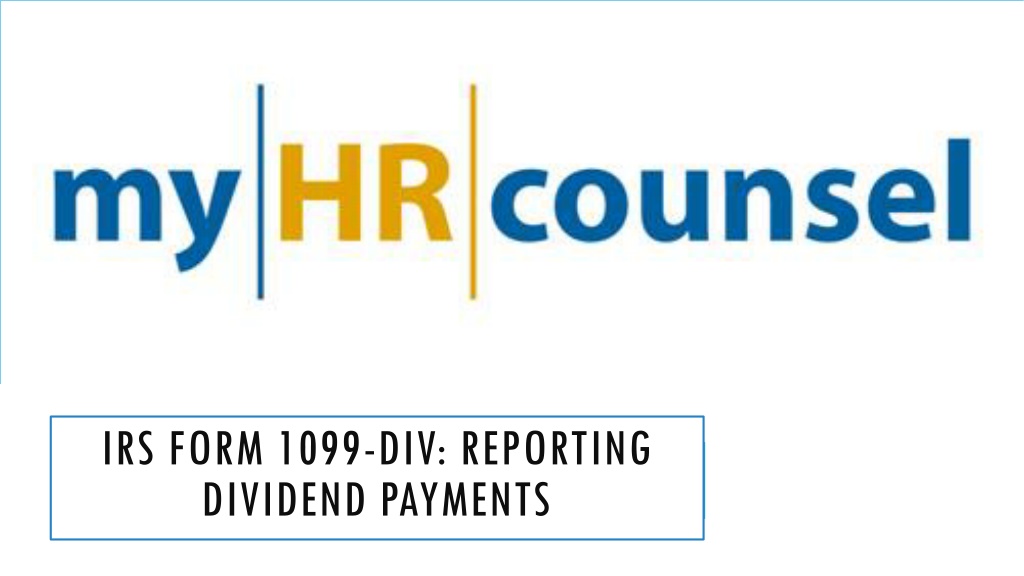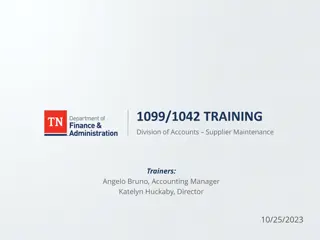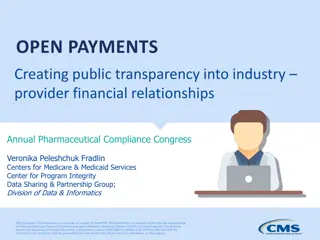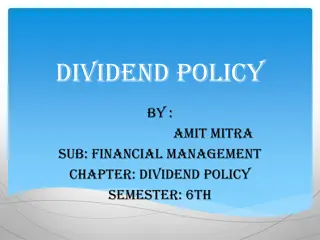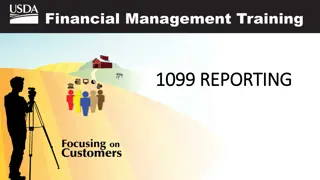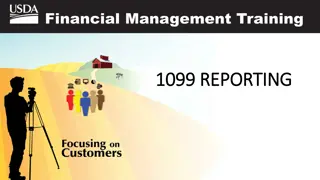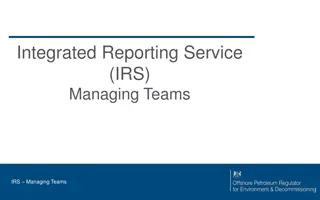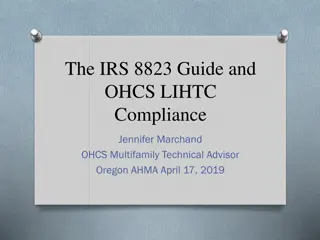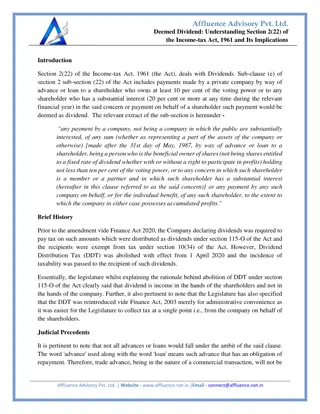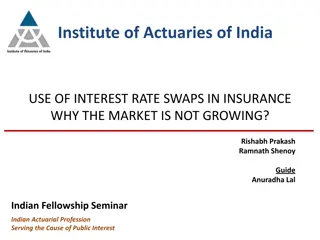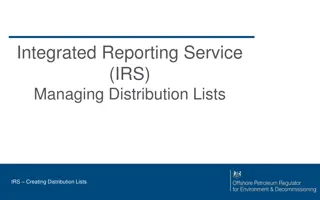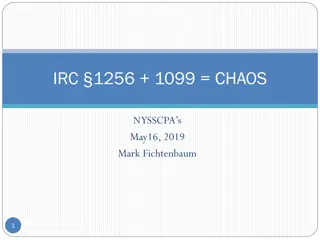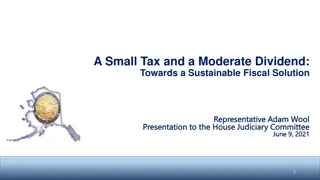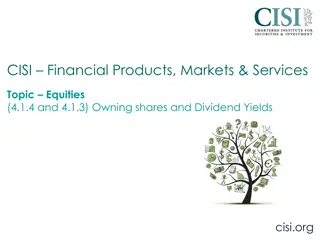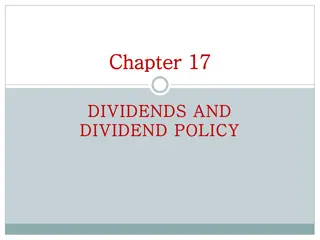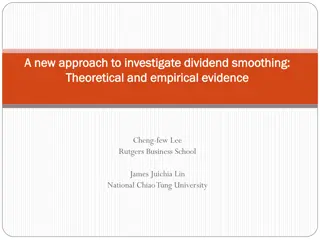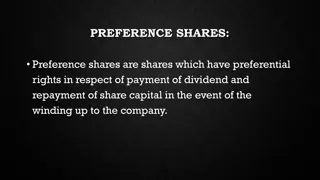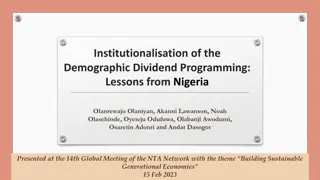Understanding IRS Form 1099-DIV and Reporting Dividend Payments
Form 1099-DIV is used to report dividend payments, including distributions like capital gains and liquidation distributions. It explains when dividends are included in income, the instances where clarity may be needed, substitute payments in lieu of dividends, and unusual instances such as delayed dividend payments until January. The form is essential for taxpayers to accurately report dividends received from investments.
Download Presentation

Please find below an Image/Link to download the presentation.
The content on the website is provided AS IS for your information and personal use only. It may not be sold, licensed, or shared on other websites without obtaining consent from the author. Download presentation by click this link. If you encounter any issues during the download, it is possible that the publisher has removed the file from their server.
E N D
Presentation Transcript
IRS FORM 1099-DIV: REPORTING DIVIDEND PAYMENTS
FORM 1099-DIV THE BASICS WHAT DOES A 1099-DIV REPORT? Use Form 1099-DIV to Report: A dividend is a distribution of money or property by a corporation to its shareholders, paid out of either current or accumulated earnings and profits Distributions, such as capital gain distributions, nontaxable distributions paid on stock, and liquidation distributions Payments of $10 or more, unless it is a payment of $600 or more as part of a liquidation
FORM 1099-DIV REPORTING DIVIDEND PAYMENTS AN OVERVIEW A dividend is ordinarily included in income for the taxpayer owning the stock on the record date The "record date" is the date on which a person must own the stock to be eligible for a dividend Accrual method taxpayers must include dividends in gross income when the dividend is declared Cash-method taxpayers do not include dividends in income until they actually receive payment or can withdraw the funds from their account
FORM 1099-DIV REPORTING DIVIDEND PAYMENTS INSTANCES WHERE IT MAY BE UNCLEAR If you make a payment that MAY be a dividend, BUT are unable to determine whether any part of the payment is a dividend by the time you must file Form 1099-DIV, the entire payment should be reported as a dividend Taxable dividend distributions from life insurance contracts and employee stock ownership plans (ESOP) are reported on Form 1099-R, Distributions From Pensions, Annuities, Retirement or Profit-Sharing Plans, IRAs, Insurance Contracts, etc.
FORM 1099-DIV REPORTING DIVIDEND PAYMENTS SUBSTITUTE PAYMENTS IN LIEU OF DIVIDENDS Substitute payments in lieu of dividends: For payments received by a broker on behalf of a customer in lieu of dividends as a result of a loan of customer securities, then use 1099-MISC
FORM 1099-DIV REPORTING DIVIDEND PAYMENTS UNUSUAL INSTANCES - DIVIDEND PAYMENT DELAYED UNTIL JANUARY If a regulated investment company (RIC such as a mutual fund) or a real estate investment trust (REIT) declares a dividend in October, November, or December, payable to shareholders of record on a specified date in such a month, the dividends are treated as paid by the RIC or REIT and received by the recipients on December 31 of such year, so long as the dividends are actually paid by the RIC or REIT by then If a dividend paid in January is subject to Backup Withholding, withhold when the dividend is actually paid, deposit withholding as appropriate, and report it on Form 945, Annual Return of Withheld Federal Income Tax
FORM 1099-DIV REPORTING DIVIDEND PAYMENTS WHEN TO FILE FORM 1099-DIV Must file Form 1099-DIV when: 1)Payor pays dividends (including capital gain dividends and exempt-interest dividends discussed below) and other distributions on stock worth $10 or more 2)Payor has withheld and paid any foreign tax on dividends and other distributions of stock 3)Payor has withheld any federal income tax on dividends under Backup Withholding rules 4)Payor has paid $600 or more as part of a liquidation
FORM 1099-DIV REPORTING DIVIDEND PAYMENTS ODDS & ENDS Must use the identification number of the payee Either EIN or SSN usually When issuing dividends to trusts or estates, a trustee has a duty to inform the payors of the identification number of the estate or trust Shareholders of large publicly-held corporations generally receive Form 1099-DIV statements by January 31
FORM 1099-DIV WHAT'S NEW ?!?!?! Exempt-interest dividends from a mutual fund or other regulated investment company (RIC) are now reported on Form 1099-DIV "Exempt-interest dividends" are dividends from assets such as municipal bonds ADDED BOXES TO REPORT STATE TAXATION OF DIVIDENDS
FORM 1099-DIV QUALIFIED VS. ORDINARY DIVIDENDS B. Spector Vikings Supporters Co. 233 Minneapolis Drive Minneapolis, MN 55402 J. Doe 111Boo Packers Drive Milwaukee, WI 53201
FORM 1099-DIV QUALIFIED V. ORDINARY DIVIDENDS ORDINARY DIVIDENDS Ordinary Dividends are the most common type of distribution from a corporation Paid out of the earnings and profits of the company A distribution is generally taxable as an Ordinary Dividend to the extent it does not exceed: The corporation's current earnings and profits, and The corporation's accumulated earnings and profits The accumulated earnings and profits are determined as of the beginning of the current tax year
FORM 1099-DIV QUALIFIED V. ORDINARY DIVIDENDS ORDINARY DIVIDENDS Includes: 1. Dividends received on any share of stock held for less than 61 days during the 121-day period that began 60 days before the ex-dividend date Includes the day the recipient disposed of the stock, but not the day the recipient acquired it 2. Dividends attributable to periods totaling more than 366 days that have been received on any share of preferred stock held for less than 91 days during the 181-day period that began 90 days before the ex-dividend date "Ex-dividend date" is the first date following the declaration of a dividend and the purchaser of a stock is not entitled to receive the next dividend payment
FORM 1099-DIV QUALIFIED V. ORDINARY DIVIDENDS ORDINARY DIVIDENDS Includes: 3. Dividends that relate to payments that the recipient is obligated to make with respect to short sales or positions in substantially similar or related property 4. Dividends paid by a regulated investment company (RIC) that are not treated as Qualified Dividend income 5. Dividends paid by a real estate investment trust (REIT) that are not treated as Qualified Dividend income 6. Deductible dividends paid on employer securities (from a stock bonus, pension, profit-sharing, annuity, or deferred compensation plan)
FORM 1099-DIV QUALIFIED V. ORDINARY DIVIDENDS QUALIFIED DIVIDENDS Dividends are taxed as Qualified Dividends when: Paid by a U.S. corporation or qualifying foreign corporation, and The holding period is met: Stockholder must have held the stock for more than 60 days during the 121-day period that begins 60 days before the ex-dividend date REPEAT: The "ex-dividend date" is the first date following the declaration of a dividend on which the buyer of stock is not entitled to receive the next dividend payment *Include the day disposed of stock, but not the day acquired
FORM 1099-DIV QUALIFIED V. ORDINARY DIVIDENDS LOOKS LIKE QUALIFIED DIVIDENDS, BUT ARE ORDINARY DIVIDENDS The following types of dividends may not be treated as Qualified Dividends, even if they meet the requirements for Qualified Dividend treatment: Dividends from a corporation that is a tax-exempt organization or farmer's cooperative Dividends paid on deposits with mutual savings banks, cooperative banks, credit unions, savings and loan associations, building and loan associations, and similar financial institutions Dividends paid by a corporation that are held on the date of record (the date the payee is eligible to receive a dividend) by an employee whose company has an Employee Stock Ownership Plan (ESOP) Certain dividends paid by a regulated investment company (RIC) or real estate investment trust (REIT)
FORM 1099-DIV CONSTRUCTIVE DIVIDENDS A constructive dividend is a payment made either directly to or on behalf of a shareholder that is not labeled as a dividend, but "looks like a dividend" This happens when a distribution is a loan and there is an issue whether the shareholder and corporation actually and reasonably intended that the money would be repaid within a reasonable time IRS examines certain factors to resolve this issue ..
FORM 1099-DIV CONSTRUCTIVE DIVIDENDS Factors used to determine whether the intent to repay a loan is present include whether: 1)There was a formal loan instrument evidencing the obligation of the shareholder to repay the amount received 2)The shareholder provided security for the loan 3)The shareholder repaid prior loans or there is a record of continual net increases in the shareholder's loan account 4)The shareholder was expected to have ample funds available when repayment was due, or there were continual borrowings with no other source for repayments 5)The shareholder repaid the loan with interest before the IRS challenged its status 6)The corporation regularly paid a dividend to the shareholder 7)The shareholder is/was the sole or controlling shareholder
FORM 1099-DIV BOX 2 CAPITAL GAINS In Box 2a, report Total Capital Gains on the distributions of dividends that qualify for capital gains treatment: I. Under I.R.C. 1250 (gain from dispositions from certain depreciable realty) in Box 2b II. Under I.R.C. 1202 (gains from Qualified Small Business Stock from RICs discussed in more detail in the next slide) in Box 2c and III. Long-term assets that are collectibles in Box 2d
FORM 1099-DIV BOX 2 CAPITAL GAINS I.R.C. 1202 - QUALIFIED SMALL BUSINESS STOCK FROM RICS Under I.R.C. 1202: 1) A 75% exclusion may be allowed on the the gain from the sale or exchange of qualified small business stock, acquired after February 17, 2009, and before September 28, 2010 2) For qualified small business stock acquired after September 27, 2010, and before January 1, 2012, the exclusion is 100% If any part of the capital gain distribution reported in box 2a may qualify for this exclusion, report the gain in box 2c and .
FORM 1099-DIV BOX 2 CAPITAL GAINS I.R.C. 1202 - QUALIFIED SMALL BUSINESS STOCK FROM RICS Furnish the recipient separate statements that report separately for each designated 1202 gain (if more than one, but totaled in box 2c), the following: 1. Name of the corporation that issued the stock that was sold 2. Date(s) on which the RIC acquired the stock 3. Date sold 4. Recipient's part of the sales price 5. Recipient's part of the RIC's basis in the stock and 6. The amount of the recipient's 1202 gain and the exclusion percentage
FORM 1099-DIV BOX 4 BACKUP WITHHOLDING WHAT, WHEN, AND HOW?!?! Backup Withholding is a 28% tax applied under certain circumstances, which is withheld and remitted to the IRS based on the amount reported on the 1099-DIV: When a payee of a 1099-DIV fails to furnish his or her TIN When the payee fails to certify that the TIN provided is correct When the IRS notifies an employer that it must impose Backup Withholding because the payee furnished an incorrect TIN When the IRS finds that there has been an underreporting of a dividend payment on Form 1099-DIV see I.R.C. 3406(a)(1)(C) When the payee has failed to certify, under penalty of perjury (i.e., requires a notary public stamp), that the payee is not subject to Backup Withholding
FORM 1099-DIV BOX 4 BACKUP WITHHOLDING COMMON INSTANCES Failure to Furnish: Apply Backup Withholding until a TIN is furnished in the manner required (i.e., a SSN/EIN is provided on a W-9/8) Special Backup Withholding rules may apply if the payee has applied for a TIN In this instance, the payee may sign the W-9/8, and note "Applied For" in the box provided for the TIN. The payee then has 60 days to get a TIN and provide You may choose to withhold for the first 30 days after receiving notice from the IRS, BUT after 30 days, you must withhold and remit the 28% until you receive a Form W-9/8
FORM 1099-DIV BOXES 5 AND 6 WHAT YOU NEED TO KNOW Enter in Box 5, the recipient's pro rata share of certain amounts deductible (as an itemized deduction) by a non-publicly offered Regulated Investment Company (RIC) This amount is includible in the recipient's gross income and must also be reported in Box 1a Ex: a Partner's share of expenses that would be deductible as an expense incurred in the production of income for an RIC* Enter in Box 6 any foreign tax withheld and paid on dividends and other distributions of stock
FORM 1099-DIV BOXES 8 THROUGH 14 WHAT YOU NEED TO KNOW Enter in Box 8 any cash distributed as part of a liquidation Enter in Box 9 any noncash distributions made as part of a liquidation Determine the fair market value of the noncash distribution as the value on the date of the distribution Enter in Box 10 exempt-interest dividends from a mutual fund or other RIC REPEAT: "Exempt-interest dividends" are dividends from assets such as municipal bonds Enter in Box 11 exempt interest dividends paid by a RIC on specified private activity bonds to the extent that the dividends are attributable to interest on the bonds received by the RIC, minus an allocable share of the expenses* "Private activity bonds" are bonds used to attract investment for private projects that provide some public benefit Box 12,13 and 14 are the NEW state information boxes!
